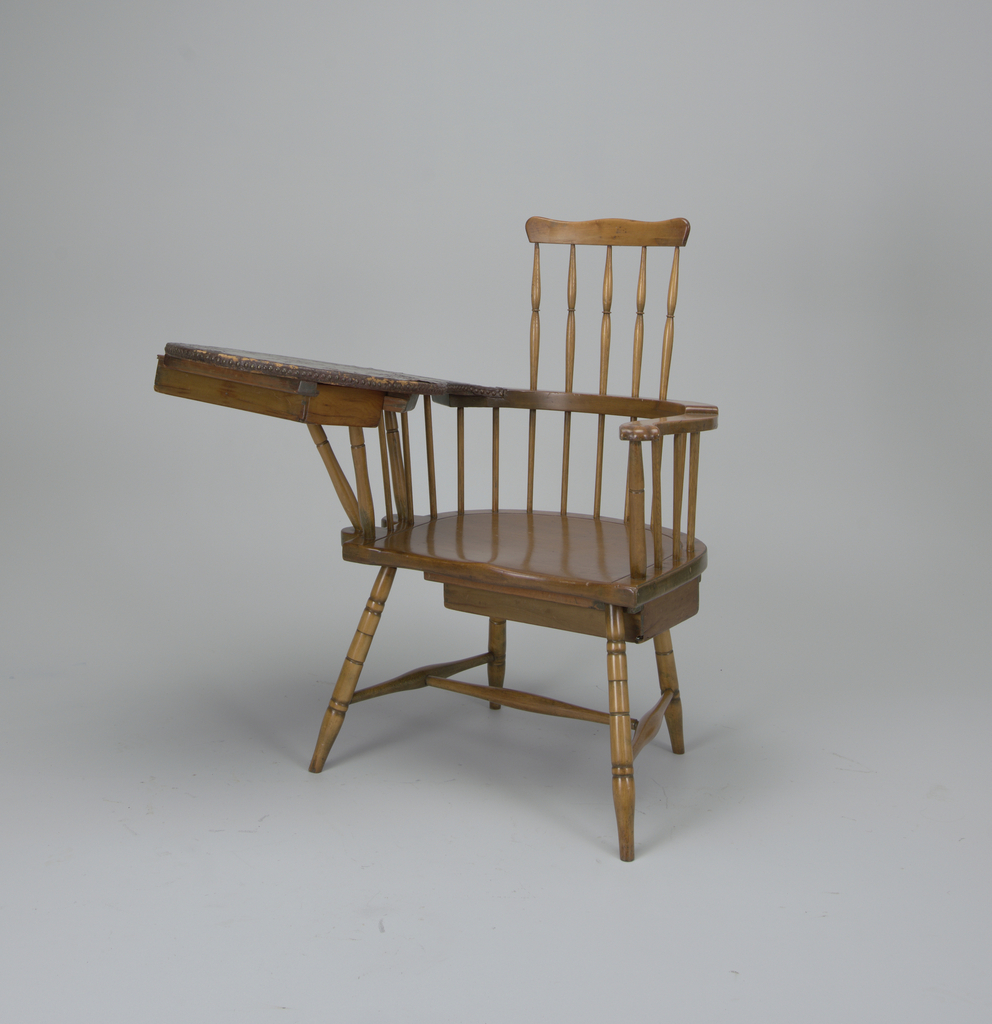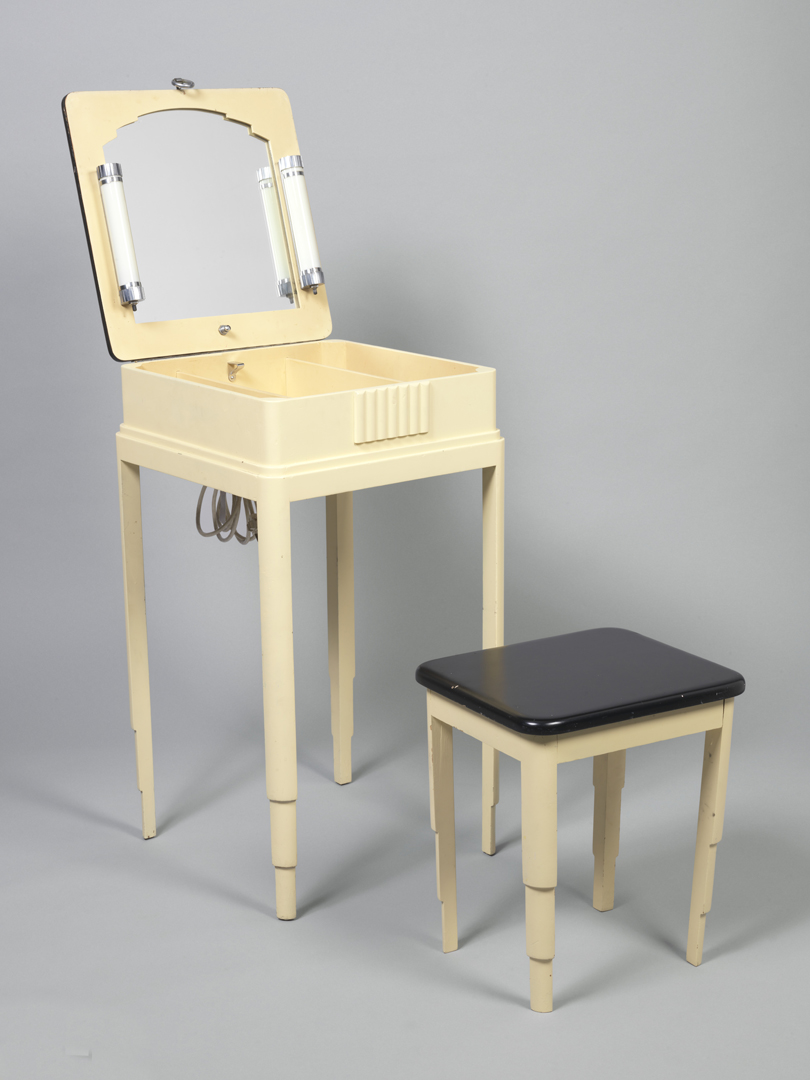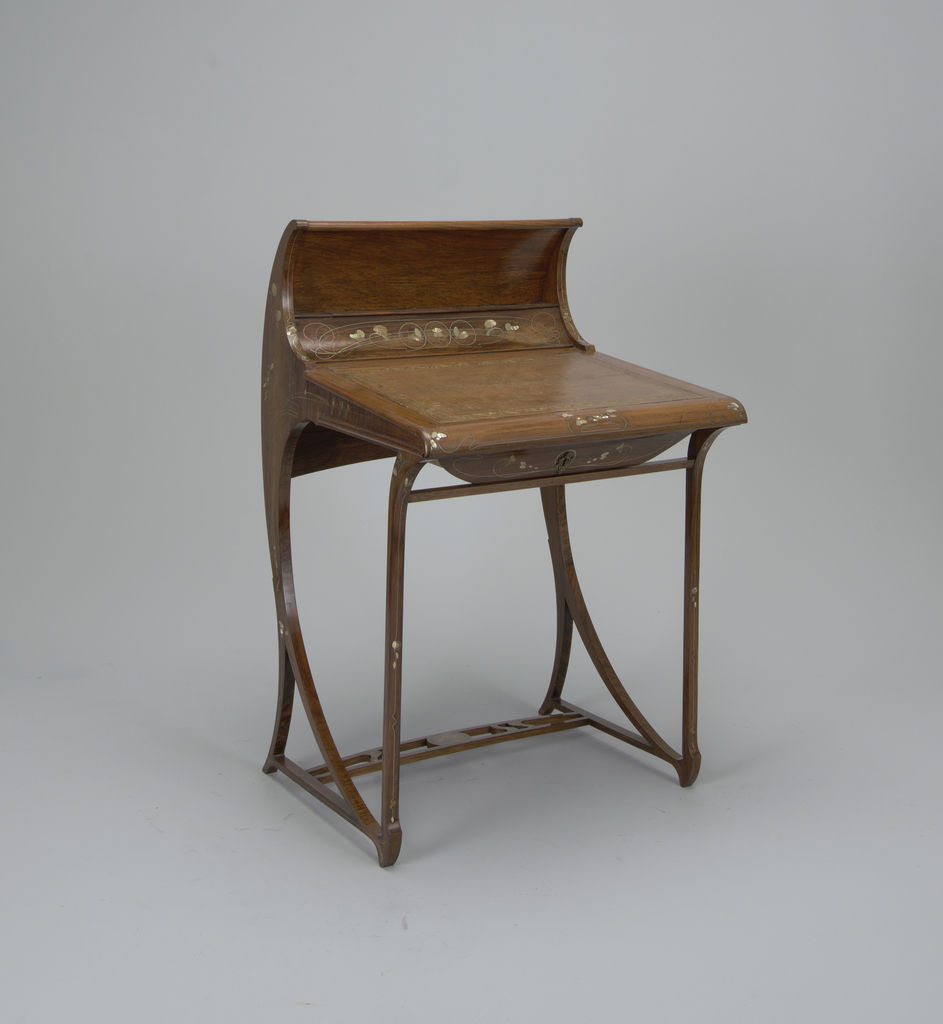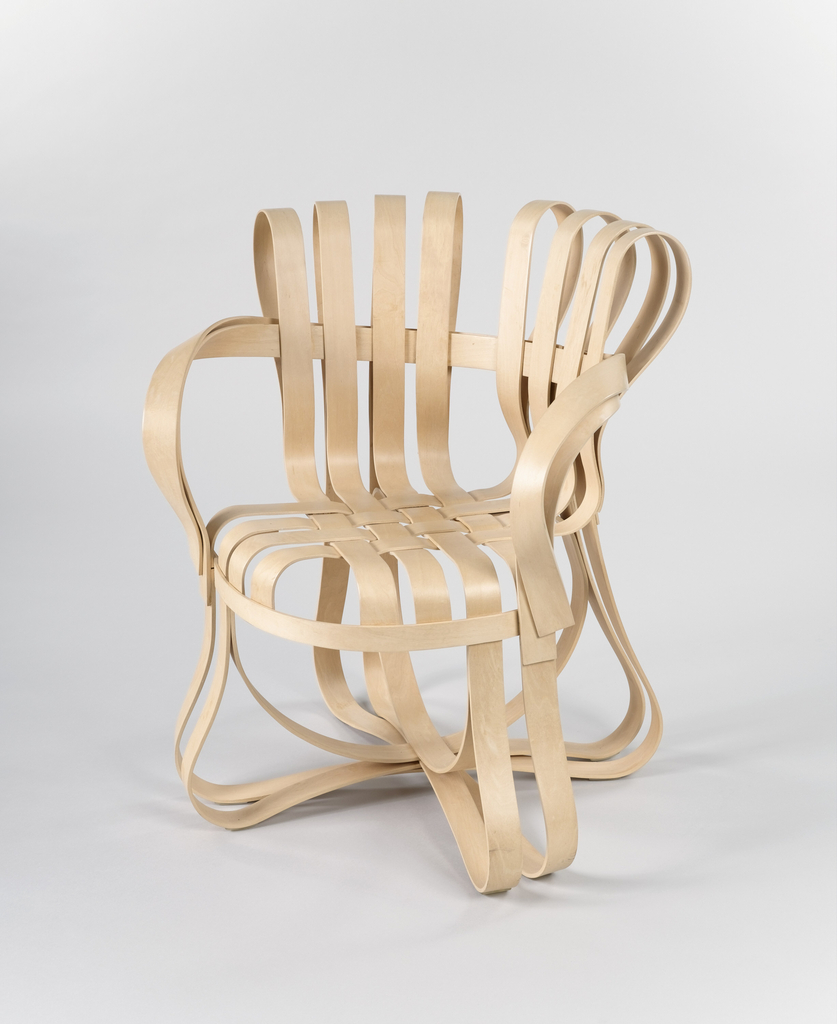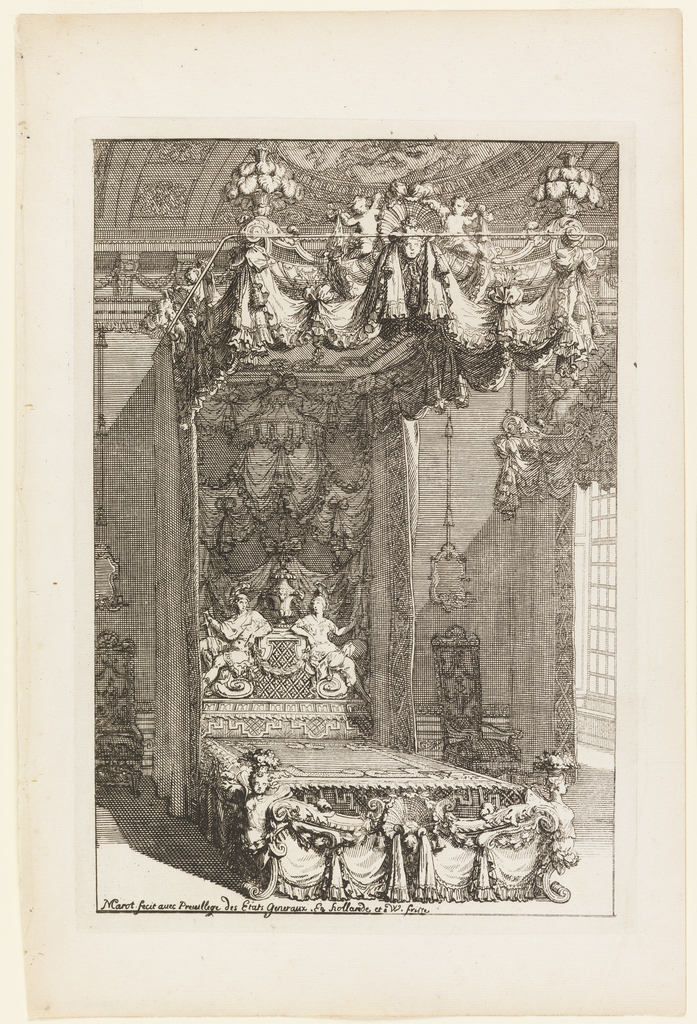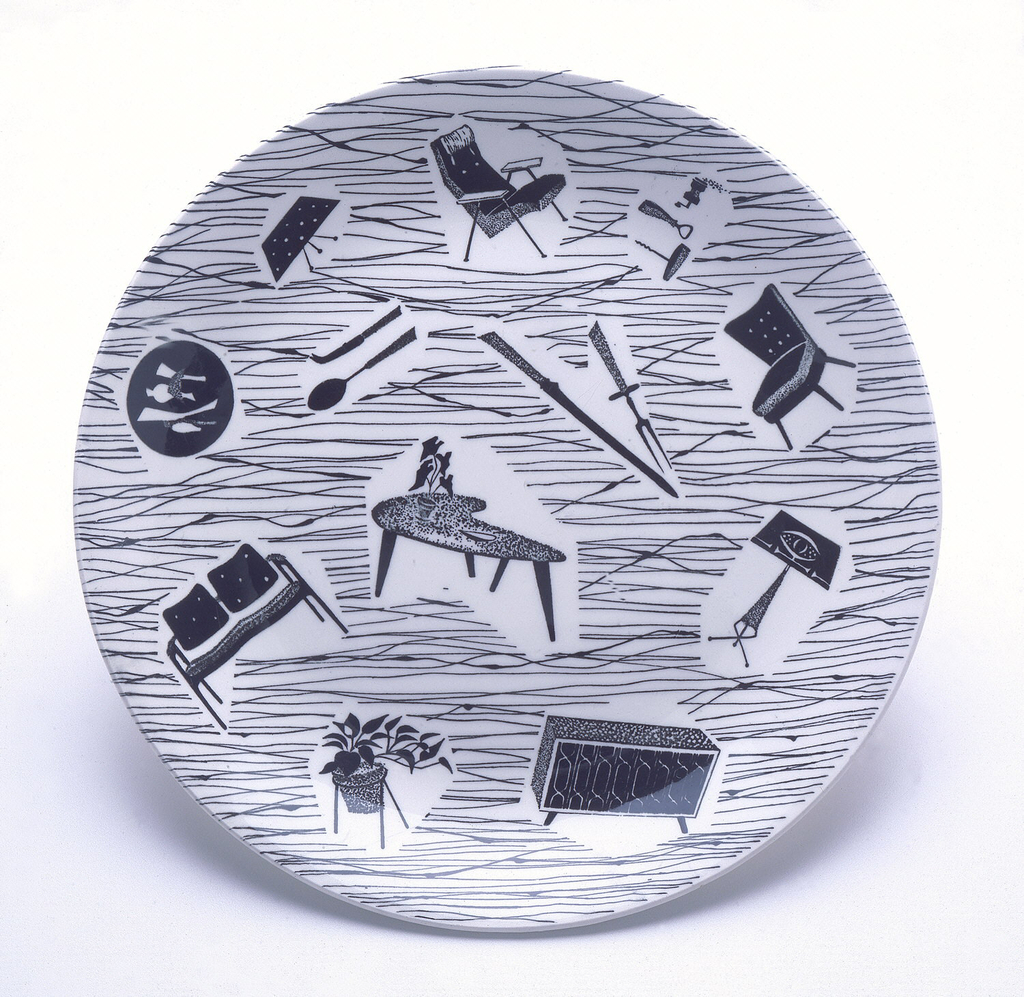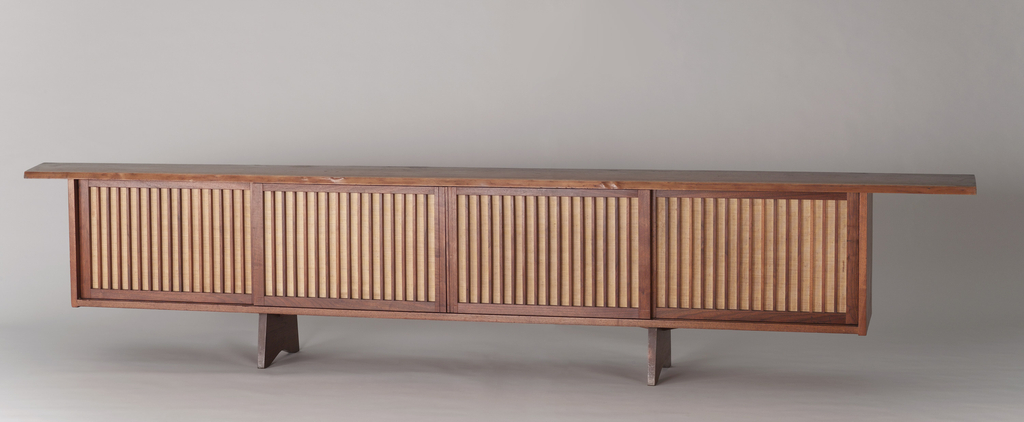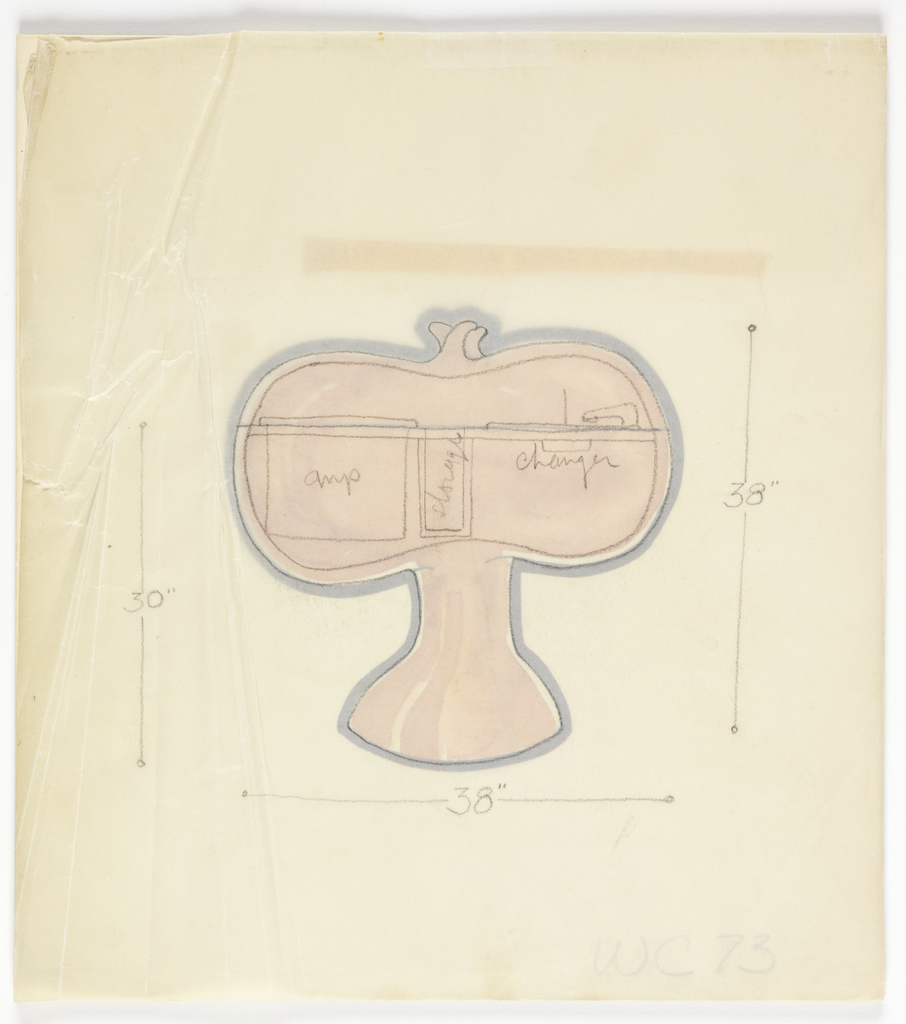What did George Washington, Thomas Jefferson, General Knox, and Benjamin Franklin have in common? Windsor chairs. These chairs were first produced in England in the very first years of the 18th century. Although many folk tales surround the origin of the name (including some involving George III caught in a rain storm), it is likely...
Lurelle Guild was a prolific industrial designer, producing useful and beautiful objects that modernized the American home spanning from vacuum cleaners to canapé plates. Guild’s usual method was to invent or develop the new product, patent it, and then assign the patent to the manufacturer, charging a fee and royalties. In 1933 and 1934 he...
This desk is an example of the Italian interpretation of the Art Nouveau style, known as Stile Floreale. This desk model was exhibited by Carlo Zen, a Milanese furniture manufacturer, at the 1902 First International Exposition of Modern Decorative Arts, in Turin, Italy. The exhibition helped Italy to show the rest of the world that...
The Cross Check Chair is named after a hockey infraction in which a player holds their stick vertically and blocks another player, illegally checking them. The name is also a reference to the seat of this chair, which is made out of interwoven maple plywood strips, creating a check pattern, and a double meaning of...
An opulent bed, almost completely dominated by its hangings, pushes at the edges of the border in this etching by the French designer and architect, Daniel Marot. This design is for a state bed (lit d’apparat), a bed that was purely ceremonial rather than functional, and kept in royal palaces and aristocratic residences in the...
After World War II, design boomed in Europe. Colors were brighter, lines more dynamic and materials more industrial—affordable modernism emerged to feed thriving consumers in the 1950s. The now iconic Homemaker tableware line started as a challenge for young English designer Enid Seeney. She was tasked with creating an “all-over” pattern for fashionable rimless plates....
One of the twentieth century’s most renowned furniture makers, George Nakashima (1905–1990) is remembered for his reverence for natural materials. With its silky, nuanced grain and soft, contoured edges, this massive sideboard embodies his profound interest in the organic expressiveness of wood. Nakashima was born in 1905 in Spokane, Washington to first-generation Japanese immigrants. After earning a master’s degree in architecture...
This chest, by twentieth-century American designer/craftsman Wendell Castle is an outstanding example of the American studio furniture movement. Commissioned as a stereo cabinet, it is a variant of a blanket chest he crafted in 1968 that is now housed in the collection of the Memorial Art Gallery, University of Rochester, Rochester, New York. Castle’s work is...
Hans and Florence Knoll founded their company in 1938 on the belief that good design enriches our lives. That belief thrives today at Knoll through their pioneering analysis of work patterns, reimagining furniture for the ever-changing workplace, and setting standards for sustainable design. Throughout its history, Knoll has fostered the most innovative designers of our...
The International Contemporary Furniture Fair is a fun place to visit each year for new trends and ideas in commercial design. Sustainability was a hot theme in the school projects represented at the ICFF: ICFF School One project in particular highlights a rising trend in product design and marketing. The product-design program of the University...
Join London-based design duo Nipa Doshi and Jonathan Levien in a conversation about their new furniture collection for Moroso that combines handmade and industrial production, a design approach that reflects a cross-cultural creative process. The discussion is moderated by Julie Lasky, Editor-In-Chief of I.D. Magazine.
The Shredded Collection Table (Fast Company Edition), made from 26 kilograms of Fast Company magazine. The Shredded Collection Console (White Edition), made from 5 kilograms of shredded confidential documents. Belgian industrial designer Jens Praet’s Shredded Series upcycles old magazines and paper into handcrafted furniture. According to Praet, “what started out as a research project...
Cooper-Hewitt’s Design Watch Members visited Steelcase for a private tour of the showroom and sunset reception on the terrace overlooking Columbus Circle. Lew Epstein presented the trends behind media:space, the convergence of furniture and technology, changing the way we think of work spaces as collaborative “destinations”. Members also previewed the Cobi chair, featured in the...
Two Volume Set, The Story of Eames Furniture This is my favorite design book from 2010. Yes, it’s huge! That’s a twelve inch ruler in the photo. It runs to 800 gloriously printed pages containing over 2,500 images, with a sturdy box to protect the volumes. Congratulations to Gestalten for such a superb production! And...
1. I was delighted to see that Lerival – Furniture by Architects is carrying Morehead & Morehead’s brilliant Felt Stool (1). This is currently produced in synthetic automotive felt, which is the only reason I didn’t include it in Fashioning Felt. Otherwise its simple folded form says, in brief, everything I love about felt. ...
